The most important notes or chord tones in a chord are the notes that contribute most to the actual sound or “color” of the chord. For a major or minor triad, the third of the chord performs this function. For other chords, any note that makes it different from other chord types with the same root are the color tones.
This lesson is a more for less type of lesson exploring what notes are actually important in chords. The best place to start with this concept is 4-part chords and the Big Six Core Chords.
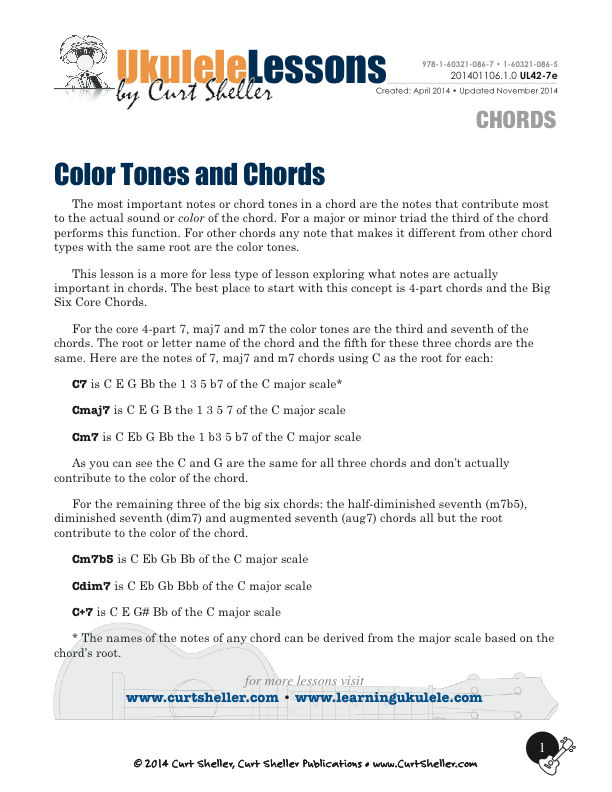

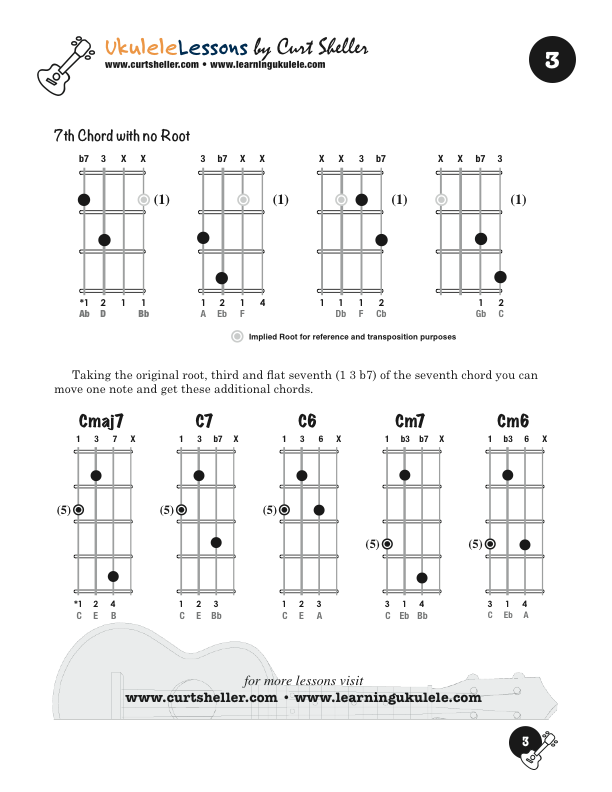
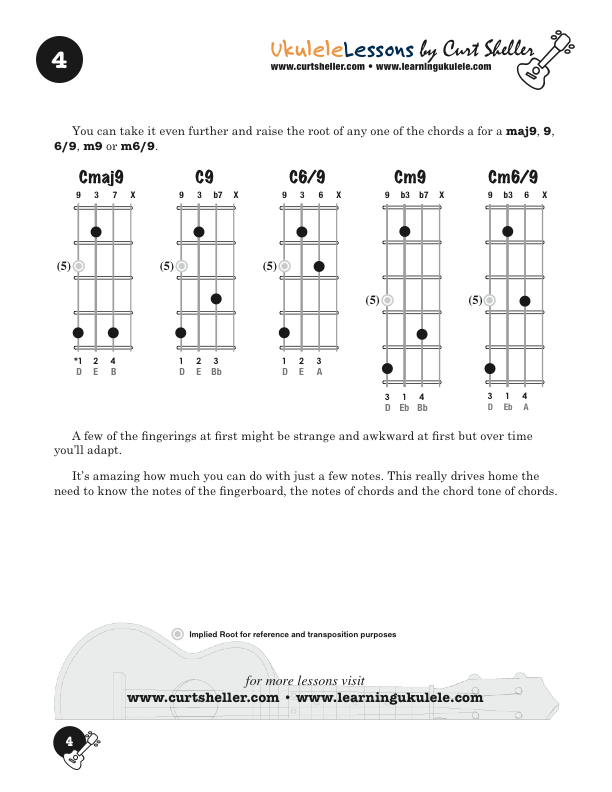
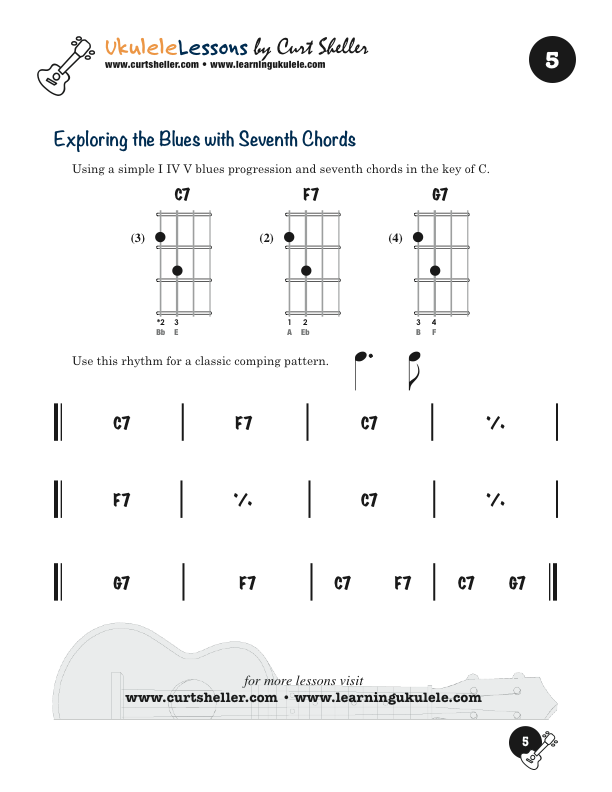
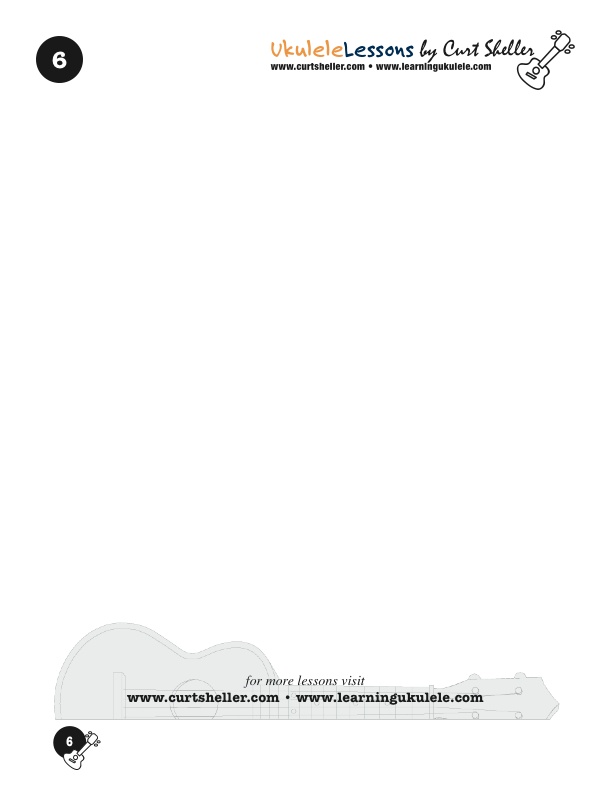






The most important notes or chord tones in a chord are the notes that contribute most to the actual sound or “color” of the chord. For a major or minor triad, the third of the chord performs this function. For other chords, any note that makes it different from other chord types with the same root are the color tones.
Available for Premium Site Access Plans Only
This lesson is a more for less type of lesson exploring what notes are actually important in chords. The best place to start with this concept is 4-part chords and the Big Six Core Chords.
This information is critical when creating your own melody and chord ukulele arrangements and are limited to four, three or two strings to harmonize a melody.
This lesson is a more for less type
of lesson exploring what notes are actually important in chords. The best place to start with this concept is 4-part chords and the Big Six Core Chords.
For the core 4-part 7, maj7 and m7 the - the Big Three of the Big Six Core Chords, the color tones are the third and seventh of the chord. The root or letter name of the chord and the fifth for these three chords are the same. Here are the notes of a 7, maj7 and m7 chord using C as the root for each:
- C7 is C E G Bb the 1 3 5 b7 of the C Major Scale
- Cmaj7 is C E G B the 1 3 5 7 of the C Major Scale
- Cm7 is C Eb G Bb the 1 b3 5 b7 of the C Major Scale
As you can see, the C and G are the same for all three chords and do not contribute to the color of the chord.
For the remaining three of the big six chords: the half-diminished seventh (m7b5), diminished seventh (dim7), and augmented seventh (aug7) chords all but the root contribute to the color of the chord.
- Cm7b5 is C Eb Gb Bb of the C Major Scale
- Cdim7 is C Eb Gb Bbb of the C Major Scale
- C+7 is C E G# Bb of the C Major Scale
The most important notes or chord tones in a chord are the notes that contribute most to the actual sound or “color” of the chord. For a major or minor triad, the third of the chord performs this function. For other chords, any note that makes it different from other chord types with the same root are the color tones.
Available for Premium Site Access Plans Only
This lesson is a more for less type of lesson exploring what notes are actually important in chords. The best place to start with this concept is 4-part chords and the Big Six Core Chords.
This information is critical when creating your own melody and chord ukulele arrangements and are limited to four, three or two strings to harmonize a melody.
This lesson is a more for less type
of lesson exploring what notes are actually important in chords. The best place to start with this concept is 4-part chords and the Big Six Core Chords.
For the core 4-part 7, maj7 and m7 the - the Big Three of the Big Six Core Chords, the color tones are the third and seventh of the chord. The root or letter name of the chord and the fifth for these three chords are the same. Here are the notes of a 7, maj7 and m7 chord using C as the root for each:
- C7 is C E G Bb the 1 3 5 b7 of the C Major Scale
- Cmaj7 is C E G B the 1 3 5 7 of the C Major Scale
- Cm7 is C Eb G Bb the 1 b3 5 b7 of the C Major Scale
As you can see, the C and G are the same for all three chords and do not contribute to the color of the chord.
For the remaining three of the big six chords: the half-diminished seventh (m7b5), diminished seventh (dim7), and augmented seventh (aug7) chords all but the root contribute to the color of the chord.
- Cm7b5 is C Eb Gb Bb of the C Major Scale
- Cdim7 is C Eb Gb Bbb of the C Major Scale
- C+7 is C E G# Bb of the C Major Scale
Color Tones and Chords
NOTE: The names of the notes of any chord can be derived from the major scale based on the chord's root.
Exploring Color Tones
From the four voicings of the 7, maj7 and m7 chords in the Big Six series of lessons find and only play the thirds and sevenths of the chords - the color tones.
As you might be able to figure out – knowing the names of the notes in ALL your chords and the notes of the fingerboard will go a long way when exploring this approach to chords. You pretty much can not apply any of this without knowing the notes of the fingerboard and, at a minimum, the 15 major scales.
Altered Seventh Chords
A extreme when knowing the names of the chords tones and notes for the ukulele.
Grab any chord, any shape on the ukulele. You can also justify every note of the chord as a seventh chord as long as there is no major seventh interval/chord tone in the chord.
A seventh chord is a 1 3 5 b7 as the basic chord and can have a b9, #9, 11, #11/b5, #5/b13, 13. Just can't justify a major seventh.
Pretty much works for Jazz
chords and not very basic folk-type chords.
Related Lessons, Videos, Lesson Series, Songs, Books & Reference Charts, Resources & Assets, Workshops are below.
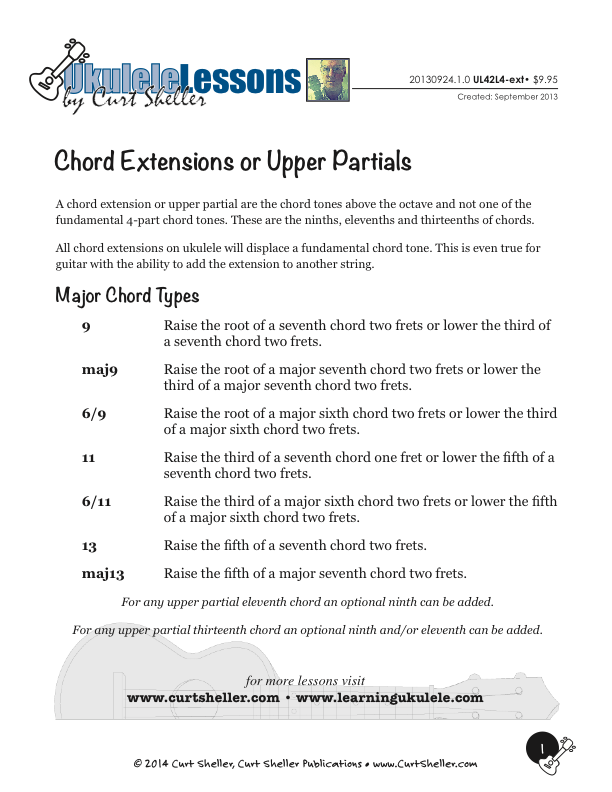
A chord extension or upper partial are the chord tones above the octave and not one of the fundamental 4-part chord tones. These are the ninths, elevenths and thirteenths of chords. All chord extensions on ukulele will displace a fundamental chord tone. This is even true for guitar with the ability to add the extension to another string.
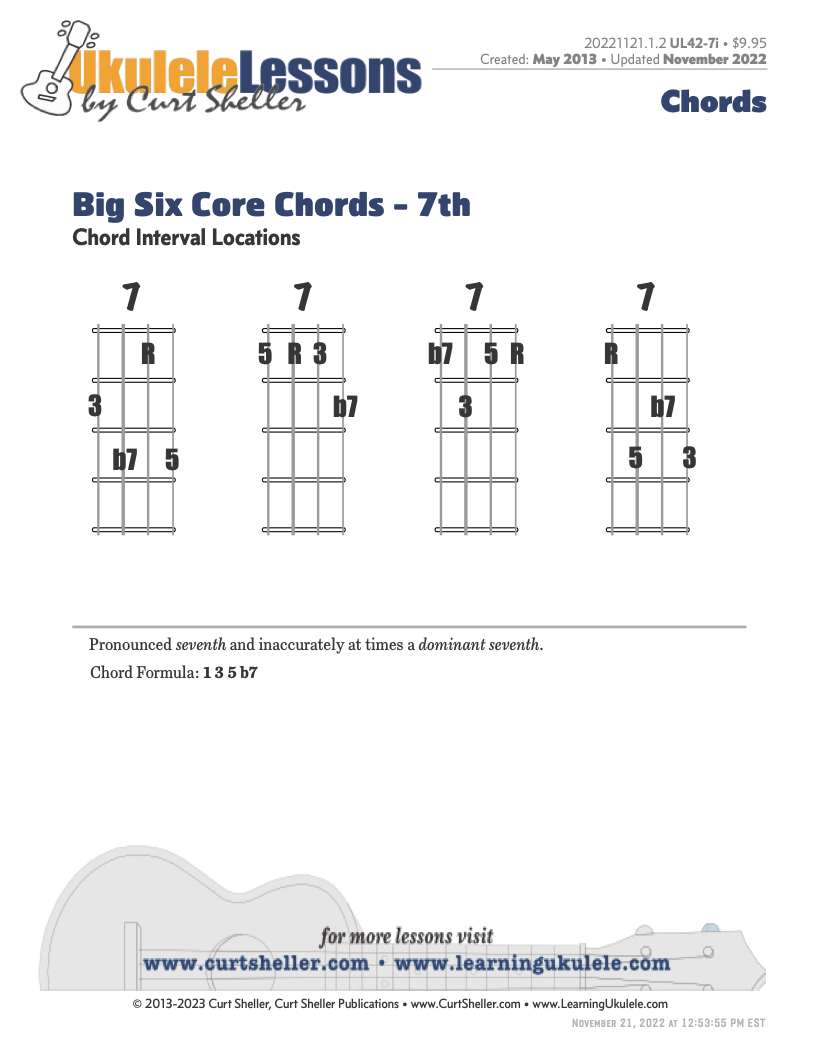
The Big Six Core Chords - Level I: "F7" is created from the "1 3 5 b7" of the major scale, based on the root of the chord. For "F7" the chord tones are: F A C Eb. This lesson introduces the four "F7" voicings on the string set, strings 1, 2. 3, and 4. The Chords are shown for C Tuning, Low and High G.
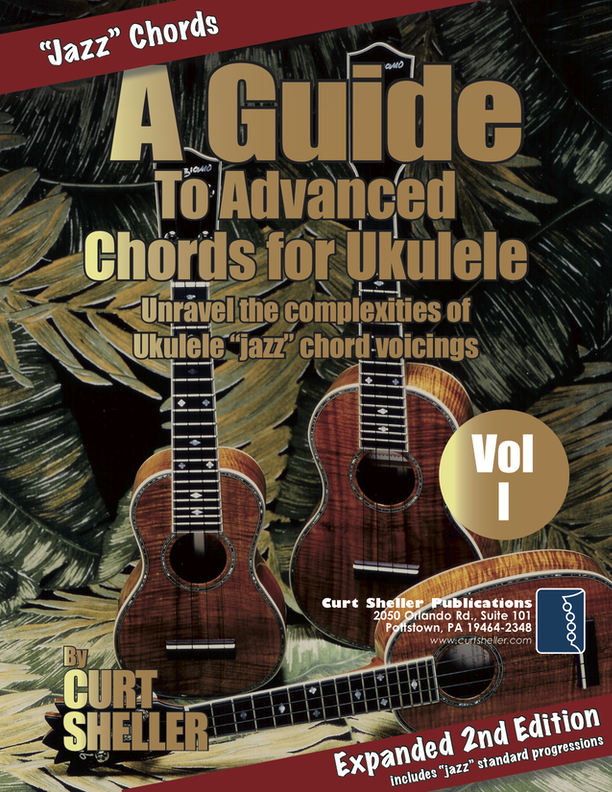
Beyond learning basic Ukulele chords, most players struggle with advanced chords. Commonly called "jazz" chords, these more sophisticated voicings find a wide use in all forms of music. A Guide to Advanced Chords for Ukulele - presents a highly organized and efficient approach to the mysterious subject of advanced chords. Chord dictionaries are not the answer.
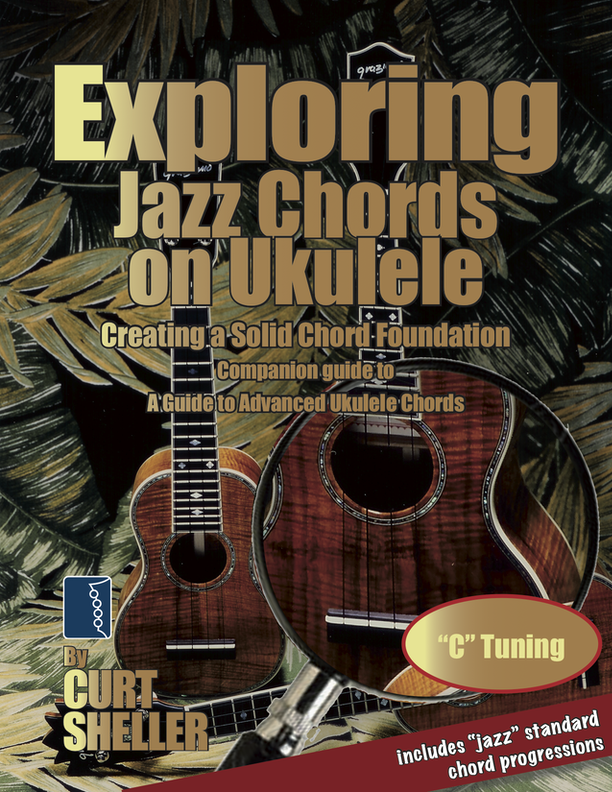
Exploring jazz chords using a variety of common chord progressions based on songs from the standard jazz repertoire. Core Chords are the basic set of chords needed to play a wide range of music, in a variety of styles. This set of chords includes basic open position chords, basic movable form chords and the core 4-part "jazz" chords.
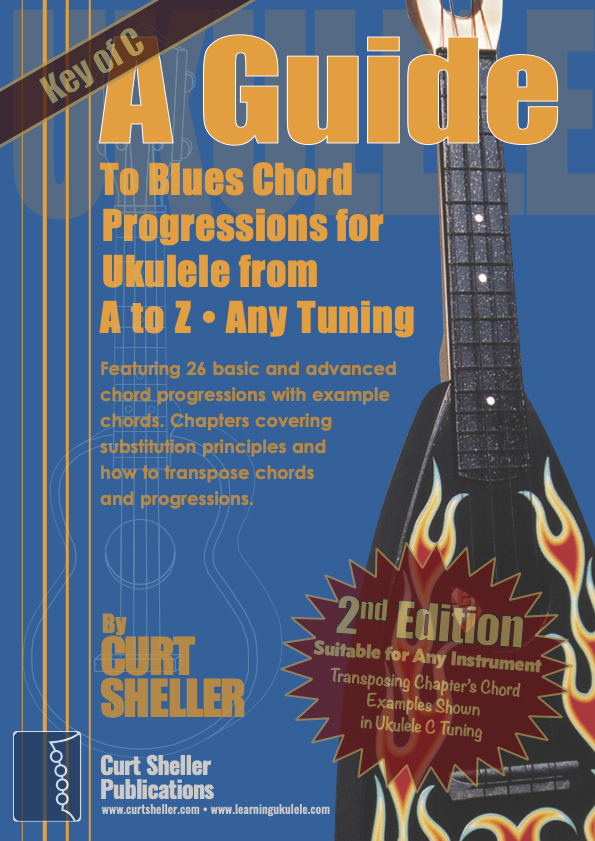
The Blues are at the heart of all American music. It has influenced Country, Rock, Folk, Jazz, Bluegrass and just about every form of American music we listen to today. 26 blues progression in C and G tuning, progressing from basic to advanced jazz progression, with chord grids and substitutions explained.

Finally, learn the names of the notes of the ukulele fingerboard in C tuning .

Learn the six fingering principles to navigating the ukulele fingerboard. Fingering is one of the most universal topics. Book: Six Secrets of the Ukulele Fingering

Harmonic Analysis is the understanding of the functional sequence of chords. It is the process used to analyze the harmonic structure of a progression, song or composition. Book: Harmonic Analysis for Scale Selection and Chord Substitution

Learn to read single note melodies in the first/open position is a lot easier than you might think. Book: Ukulele – Reading Music Series – Primer

An organized collection of daily practice and reference material for the contemporary ukulele player for developing the vocabulary and knowledge necessary for single note playing. Book: Daily Practice Material for the Contemporary Ukulele
Checkout the Books & Reference Charts for additional Handy, Dandy Reference Charts.

Ukulele Fingerboard Chart for C Tuning, Low or High G – G C E A

Ukulele Fingerboard Chart for G Tuning, Low or High A – D G B E

A handy reference chart of all 15 major and relative minor key signatures. US Letter 8.5 x 11 sized (ANSI-A), A4
Checkout the Books & Reference Charts for additional Handy, Dandy Reference Charts.



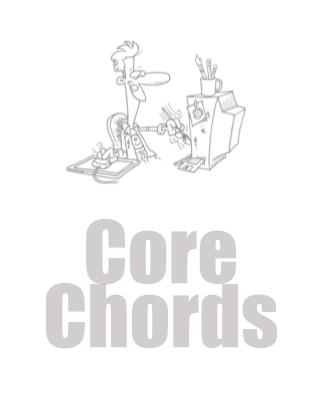

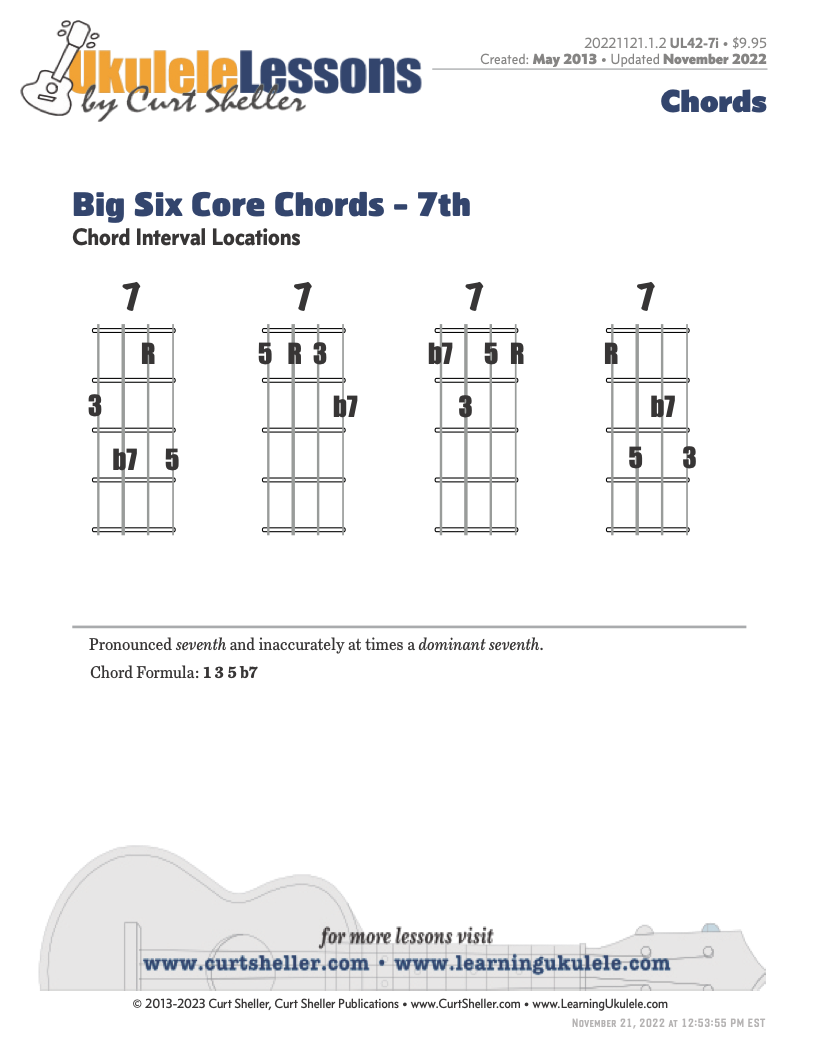
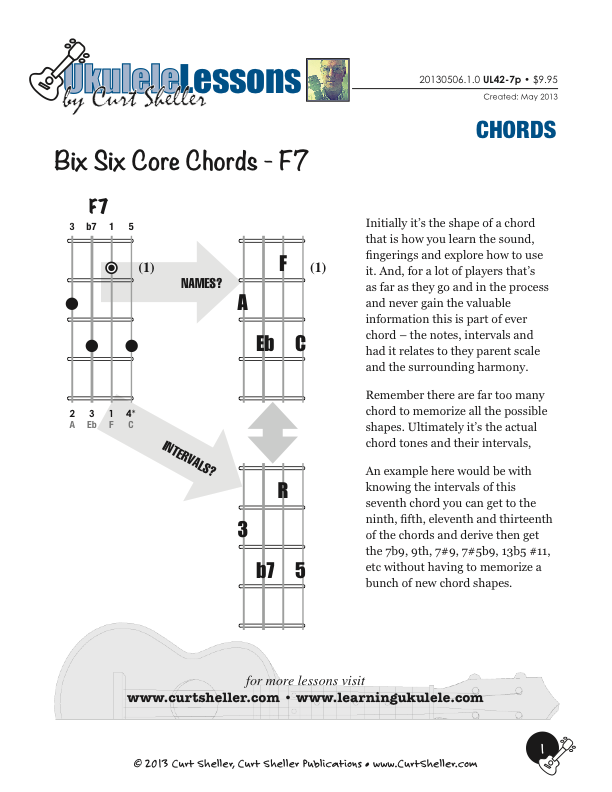
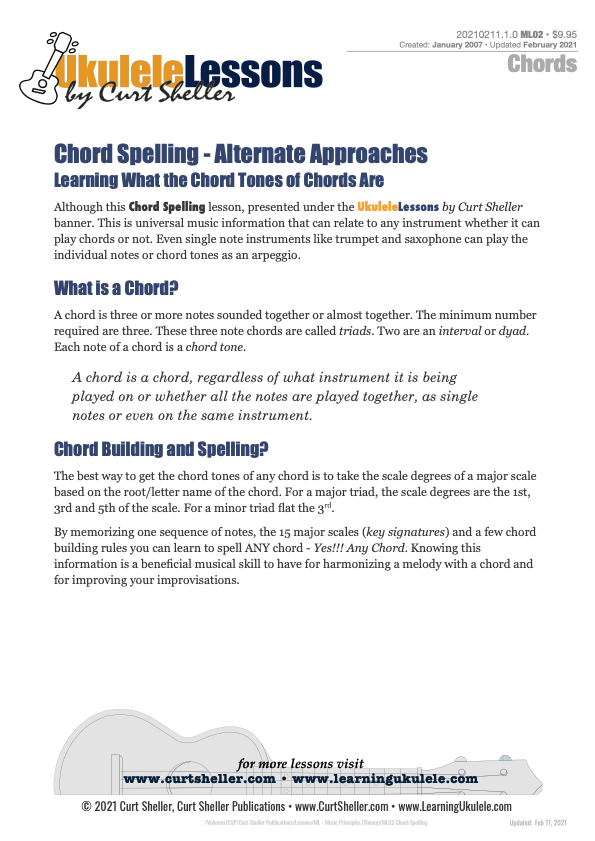

.jpg)